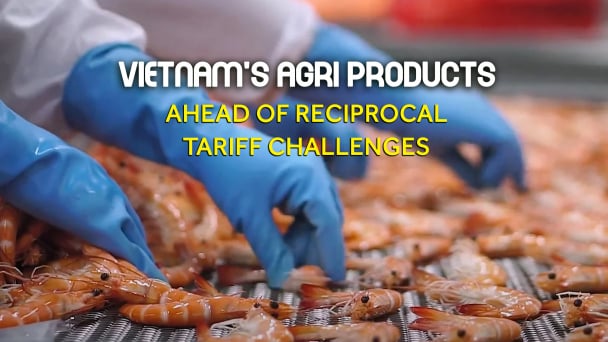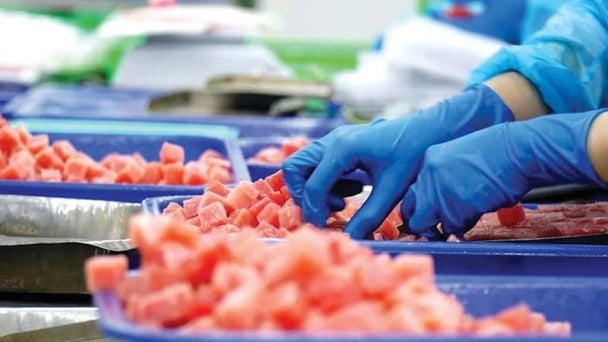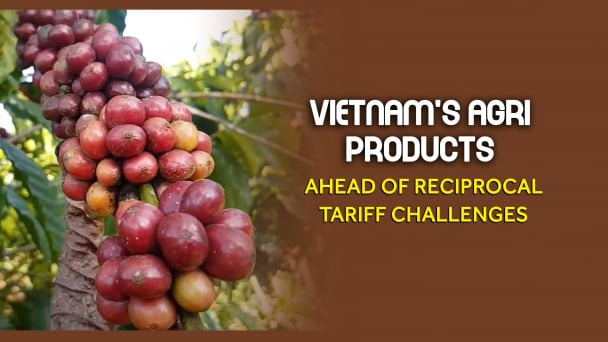May 29, 2025 | 15:58 GMT +7
May 29, 2025 | 15:58 GMT +7
Hotline: 0913.378.918
May 29, 2025 | 15:58 GMT +7
Hotline: 0913.378.918
With the prospect of renewed tariff wars looming, conflicts in the Middle East and Black Sea blazing untended, and extreme weather causing chaos everywhere, World Grain caught up with Dan Basse, president and founder of AgResource Company, to get his perspective on this volatile situation impacting global grain markets.
In a conversation with World Grain a year ago, Basse described a world “fractured” by economic and political divides, with global trade patterns beginning to realign. Fast-forward to 2024, and he believes these fractures have only deepened.
Speaking on the sidelines of the 34th Annual IAOM Mideast & Africa Conference & Expo, held in Dubai in November, Basse said the victory of Donald Trump in the US presidential election would accelerate the end of globalism and the formation of a more complex “duopoly” of world political and economic power.
One side will be led by the G7 nations — Canada, France, Germany, Italy, Japan, the United Kingdom and the United States, which represent around 30% of global GDP. The other will be led by the BRICS nations — Brazil, Russia, India, China and South Africa, which now account for around 32% of global GDP.
“What we’re seeing is a re-centering of global economic power with Washington and Beijing as the new poles in a duopolistic structure that’s shaping future trade flows,” Basse said.
Rise of BRICS
In Basse’s view, the rise of the BRICS nations as an economic bloc is emerging as a genuine seismic shift for global agriculture and the grain trade. Collectively, BRICS now outpaces the G7 in GDP growth, and this bloc has favored developing independent trade routes that bypass the United States wherever possible.
At the latest BRICS summit, Russia proposed creating a new international grain futures exchange, a move that — while still far from reality — signals a growing desire for an alternative trading framework, one free from reliance on the US dollar.
“It may take years to materialize but the intention is clear: to reduce reliance on Western markets,” Basse said.
The implications for US grain exporters are significant. Brazil, with its growing dominance in soybean and corn exports, already has eclipsed the United States in several key markets, thanks in part to price advantages and its political ties within BRICS. For its part, Russia is also now the leading price-setter and supplier of internationally traded wheat.
Meanwhile, China’s buying habits continue to underscore its strategy of diversifying suppliers, a trend that has become more apparent since the US-China trade wars were launched during the first Trump administration.
Once the United States’ largest agricultural customer, China increasingly is shifting its grain and soybean purchases to South America and Russia. China’s trade realignment speaks volumes, Basse said.
“China is doing everything it can to buy grain away from the United States,” he said, adding that price is increasingly a secondary consideration behind the desire to secure supplies from politically aligned nations.
New trade lanes
As BRICS nations build out infrastructure projects under China’s Belt and Road Initiative, the trade pipelines connecting these countries are becoming more robust, bolstering their collective capacity to withstand geopolitical headwinds and, in Russia’s case, sanctions.
“The world we’ve known — where the United States was the primary grain exporter — is changing fast,” Basse said. “As we approach 2025 and beyond, grain trade will align more along geopolitical lines, favoring countries like Brazil while squeezing traditional suppliers like the United States.
“In a broad sense, I think the United States is going to be seeing a diminishment of its export profile while other countries step up and take demand accordingly.”
This geopolitical restructuring is forcing many agricultural players in the United States and the European Union to consider the nature of future demand, and how they can stay competitive in an increasingly divided world. Moreover, they might face a major input disadvantage in this emerging two-headed global trading system: fertilizer production and supply.
Basse noted that BRICS nations dominate world production of nitrogen, phosphorus and potash.
“When we think about the Achilles heel of many of the G7 nations, it’s that they do not have the availability of fertilizers, in particular phosphorus, to keep crops and to keep cultivation moving,” he said. “So, this is something to keep in the back of your mind you want to keep very forefront in terms of what’s to come.”
Tariffs increasing
The new Trump administration brings fresh concerns for US exporters. According to Basse and his Washington sources, Trump’s first 100 days likely will include imposing tariffs of 5% to 10% on all imported goods, and potentially up to 60% on Chinese imports. Retaliatory tariffs that impact US exporters are inevitable.
The impact on agriculture will be severe. China is a massive buyer of US farm goods, accounting for 19% of total US agricultural exports worth $34 billion in 2023. But Basse expects this to drop sharply as Trump wages “war against China.” He forecasts agricultural exports will subside to just $16 billion in 2025, down from a high of $43.5 billion in 2021.
“China is a buyer in the world grain markets that you just cannot replace,” he added. “As China pulls back, the United States is losing its biggest customer, which is a major factor in the 37% decline in US farm incomes over the past two years.”
Farming headwinds
All this comes following a tough year for farmers worldwide, with global grain prices falling while production costs rise. Basse said US farmers alone are experiencing “the biggest drop in net farm income over two years on record, somewhere around $70 billion.”
This downturn ended a relatively profitable period during the pandemic and led to a crisis of confidence.
“Farmers are dissatisfied with profits and margins,” Basse told World Grain, adding that high input costs spanning equipment, fuel, fertilizer and chemicals have eaten away at earnings.
Basse’s “Global Farm Margin Index,” which tracks farmers’ financial anxiety, is now at “its lowest level since 2018,” reflecting the challenging conditions globally.
He observed that “the anxiety is high,” with farmers “looking for demand drivers … new demand to maybe stimulate interest.” Yet, yields continue to rise globally, and “there’s been enough grain around the world to keep prices under pressure,” he said.
Prices for many grains are falling even as global grain trade volumes are expected to decline. The IGC projects a dip to 419 million tonnes for 2024-25, down from 455 million tonnes in 2023-24. This shift reflects cautious forward buying, as many importers wait to see how prices and tariffs may fluctuate, Basse said.
“This year, trade has been slower to pick up,” he said, as buyers hesitate, fearing potential retaliatory tariffs and shifting market conditions.
Climate chaos
Climate variability is adding another layer of complexity to the global grain market, with major growing regions affected by extreme weather patterns.
“This stagnant weather pattern gave us excessive rain across Europe (and) the drought in the Black Sea,” Basse said. This year’s El Niño system has added to the disruptions, affecting key regions such as the Amazon River basin, where water levels are at historic lows.
The unpredictable climate dynamic is adding a fresh layer of uncertainty when it comes to predicting what comes next in terms of global supply and demand of grains.
“With stocks-to-use ratios of wheat and some of the other grains at record lows, what happens is that when you have a calamity weather-wise, the market reacts with vigor and gusto,” Basse said.
This volatile pattern is likely to continue, leaving farmers and traders contending with an uncertain and risk-laden climate.
India’s impact
Looking beyond immediate market challenges, Basse identified several emerging risks that could destabilize global grain supply chains in the years ahead. The most potentially disruptive is India, with its rapid population growth and high wheat prices.
“The price of wheat in India today is over $9 a bushel compared to Chicago being at around $5.80 a bushel, so there’s tremendous margin to importing wheat into India,” he said.
As a result, whether it’s this year or next, at some point he expects India’s politicians to greenlight major imports of wheat.
“India’s food demand is on a trajectory that may force it to start importing sizable volumes,” he said. “So, India is one moving part that we need to be very careful of looking forward because for the world wheat market, it does hold import potential of size and substance that would be very important in coming years.”
Many moving parts
Geopolitical flashpoints beyond the major grain producers add another layer of complexity.
“There’s a lot of moving parts,” Basse acknowledged, mentioning “Taiwan” and “the energy markets in the Mideast” as potential areas of risk. Meanwhile, in the United States, shifting biofuel policies could disrupt supply and demand.
“We have a biofuel policy that starts anew in January,” Basse said, noting that certification standards from the Treasury Department could impact what farmers choose to plant. He cautioned that “changeable biofuel policies” in the United States and elsewhere may lead to further instability.
“Grain markets are moving in new, sometimes conflicting directions,” Basse concluded. “As we enter 2025, the industry’s challenge will be to navigate these tensions, seeking stability in an increasingly uncertain world.”
(WG)

(VAN) Vietnamese shrimp exporters are actively looking for alternative markets and accelerating shipments to the United States in response to the pressure of impending reciprocal tariffs. This is occurring during a temporary tariff suspension.

(VAN) The import-export turnover between Vietnam and Singapore rose amid a trade rebound, with machinery, electrical equipment, and fuels making up the majority of the transaction value.

(VAN) Director General of the General Administration of Customs of China, Ms. Sun Mai Jun, has pledged to implement measures that will ease the import process for Vietnamese agricultural products.

(VAN) Although Vietnam is still increasing its coffee exports, the industry is currently in the process of determining market strategies in response to the U.S. imposition of reciprocal tariffs.

(VAN) With rising demand in Muslim-majority countries, Halal certification is becoming a critical passport for Vietnamese agricultural products seeking sustainable market access and consumer trust in the Middle East and Africa.

(VAN) Vietnam’s fruit and vegetable exports to the U.S. are rising sharply, and exporters are hoping that any upcoming reciprocal tariffs will be set at manageable levels.

(VAN) Despite meeting quality standards, Vietnamese rice bran exporters still face difficulties with administrative procedures under the new protocol.